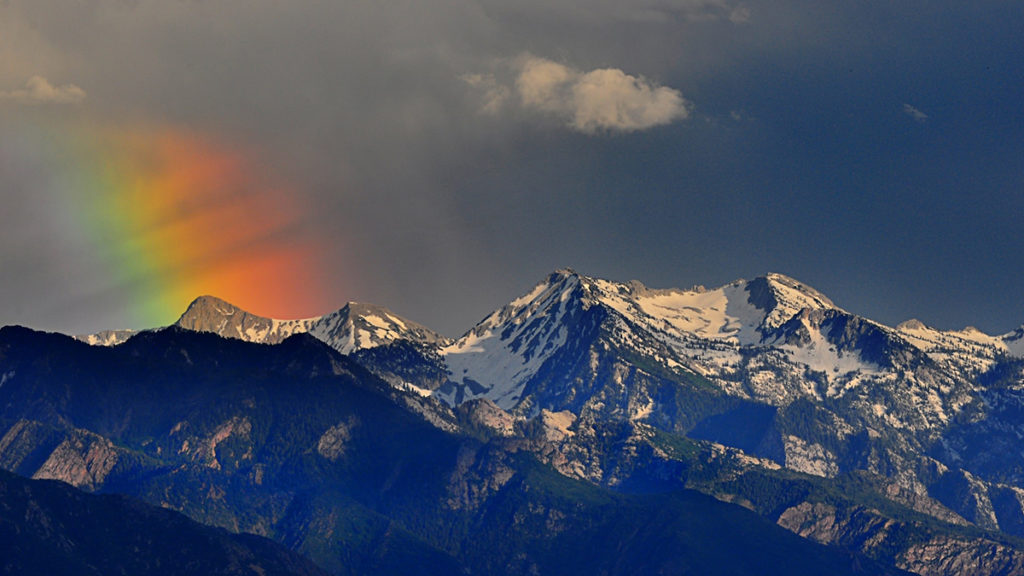
It’s reasonable to feel climate despair. The only news we get about climate change can feel like catastrophe. Hotter summers bring wildfires and record-breaking droughts.
Hurricane season is expanded and the storms are hitting harder than ever before. Winters are colder. Freezing temperatures are sticking with communities not built to endure them.
However, all this “bad news” isn’t telling the whole story. It’s not telling the story of progress. It’s not telling the story of the solutions.
It’s not telling the story of the tons and tons of brilliant, passionate people who are working every day to address this very real crisis of our lifetimes. It’s not telling the story of their optimism and vision that suggests we can make it out of this.
And when we are talking about “good news,” we’re not talking about heart-touching stories with no real impact. To quote a friend of mine, Branden Harvey, Founder of Good Good Good, it’s about sharing the “real good news, not just feel good news.”
And so here we are, sharing in that real good news about climate change.
These are stories sharing solutions, progress, and optimism in the climate crisis fight suggesting we have a way forward, we have reason to be hopeful. These are stories of what’s possible. And the more we learn about what’s possible, the more we can build it.
This page will continue to be updated as we find more instances of “good news” to pay attention to.
Good Climate News: Transportation
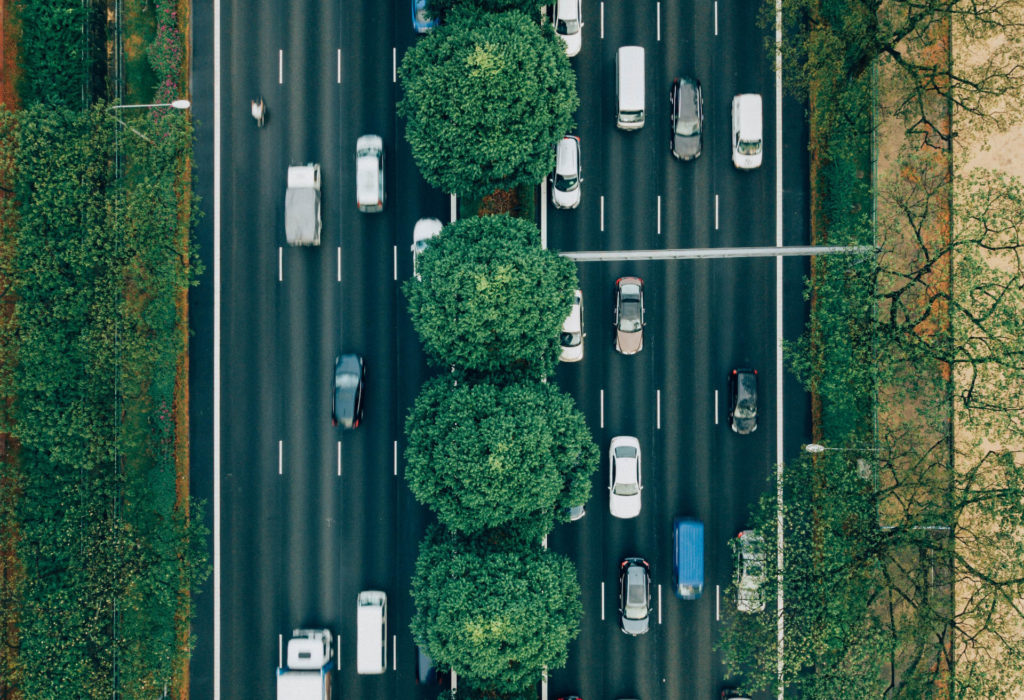
🚴♀️ E-Bike Rebates Work!
Location: Denver, CO (United States)
Date Reported: October 2022
Denver, CO has had incredible success with its E-Bike rebate program as thousands of residents have taken advantage. While there are many E-Bike rebate programs across the country, Denver’s is believed to be more successful for a few reasons:
- The rebates are between $400 – $1700 depending on the applicant’s income making the program more equitable.
- The rebate is offered as a voucher at the point of sale vs. a tax rebate which recipients would have to wait to get cash back from.
- $1700 is a lot for an E-Bike purchase! It’s one of the largest rebates for E-Bikes in the country.
- The city government also partnered with local bike retailers to keep the voucher money circulating in the local economy.
E-Bikes are more accessible clean transportation options than electric cars given their much smaller price tag.
Of course, an E-Bike won’t work for every individual or every city. I believe my hometown of San Antonio, for example, has a longer way to go for something like this than Denver (*cough* bike lanes, please *cough*).
However, of the 70 voucher recipients in Denver volunteering to have their E-Bike use tracked, 70% are riding daily and 90% are riding at least once a week. The goal is to substitute more car trips (and carbon emissions) with carbon-free E-Bike trips and at least in Denver, it’s working.
🚗 Roads Can Be Recyclable
Location: Lombardy, Italy
Date Reported: October 2022
Research funded by the Lombardy Region in Italy and conducted in large part by the Bicocca University in Milan has come up with a material called Gipave.
Gipave is a new material that’s changing asphalt technology (and roads) forever. Plastics that were destined for high-emission waste-to-energy plants now form the core of this new material.
Roads built with Gipave last twice as long as roads built traditionally. And, roads built with Gipave are 100% recyclable. When a road needs to be reconstructed, all the previously used materials can be extracted and used once again.
It’s estimated that for each kilometer of road built with Gipave, we’re saving 200 tons of potential emissions. Gipave is offering a more sustainable alternative for road construction that makes roads last longer and as a result, much safer.
🇫🇷 Paris is Killing Cars
Location: Paris, France
Reported: September 2022
Since 1990, the use of cars in Paris has declined dramatically. Public transit use is up. As well, there are about 10 times the amount of cyclists on the roads.
Why? Paris has taken consistent measures to kill cars.
Paris has created low-emissions zones, expanded green spaces, and added alternatives in public transport and bike routes to make car trips less necessary and less appealing.
Altogether, this has brought the journeys made by cars down by 45 percent in Paris since 1990 and helped the city to reduce emissions from transportation.
🔌 Electric Vehicles On the Rise!
Electric Vehicle registrations are on the rise in the United States. In 2022, the U.S. has seen a 57% increase in EV registrations over the same period last year!
Experts hypothesize that it’s the affordability of the EVs that is helping to tip more drivers over the edge. With added federal tax credits a new EV can be purchased for a little over $20,000. That’s much lower than it was previously.
Automakers are seeing these trends and are determined to bring more affordable options to market.
🛴 Scooter Fees to Fund Bike Lanes in Miami
Location: Miami, Florida (USA)
Reported: June 2021
Micro-mobility options like e-scooters help to reduce congestion and emissions in large urban centers. However, the use of micro-mobility options (like bikes or e-scooters) can be dependent on how safe the streets feel.
In Miami, they are looking to change that. The city is added three miles of bike/scooter lanes partially funded by the scooter fees themselves.
Good Climate News: Clean, Renewable Energy
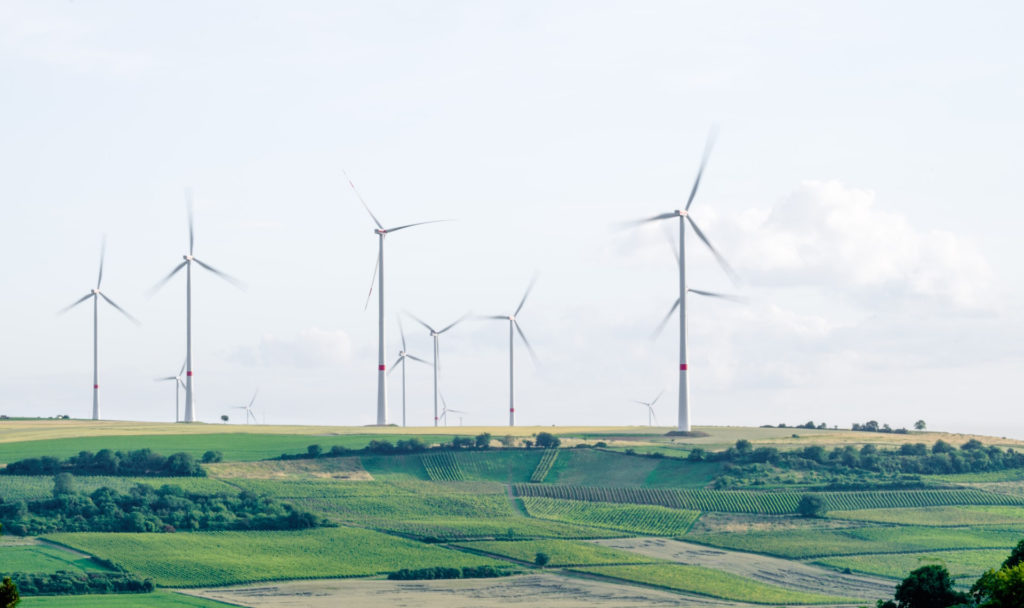
⚡️ Clean Energy Tipping Point
As reported in Bloomberg, 87 countries (including the U.S.) have hit a tipping point for the mass adoption of clean energy.
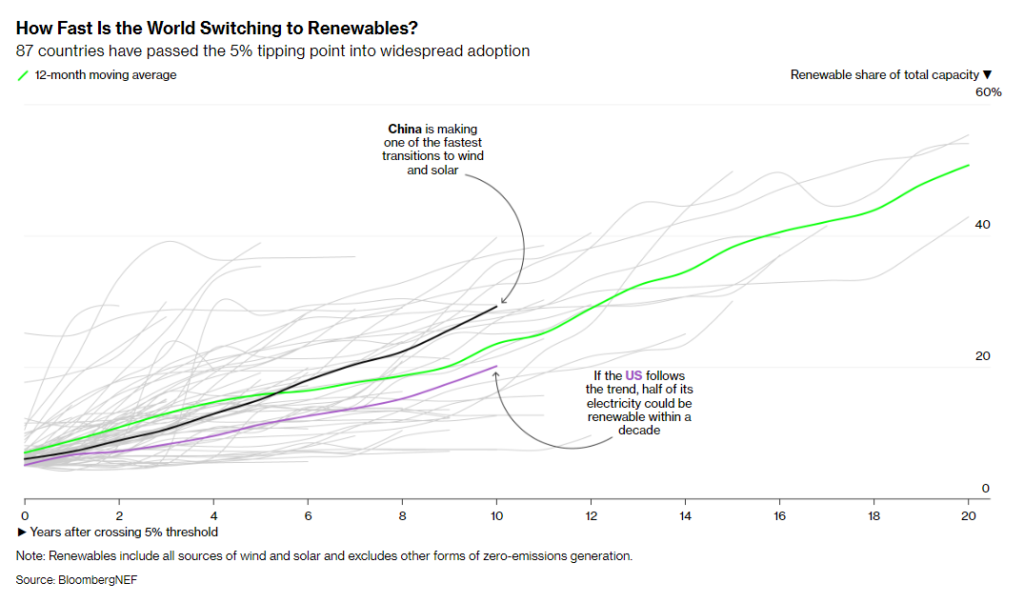
While it varies on the specific tech, this tipping point is 5%. In total, the U.S. passed the 5% tipping point for total renewable energy usage in 2001, but more recently passed the 5% tipping point with the sales of new electric vehicles.
The adoption of new technologies (like renewables) operates on an S-curve. Slow at first. Then, conditions change for adoption to move rapidly.
As time passes, costs decline as the tech improves. This makes things more accessible for consumers and demand increases.
The problems of renewable energy adoption are shifting. First, it was costs now its execution (permitting, production, etc.).
💸 Solar Panels Help Low-Income Families Save
In Greensboro, North Carolina a collection of community-based organizations partnered together to offer 10 moderate to low-income households with free solar panels.
The effects have been incredible. Almost immediately, these residents have seen 50% (or greater) drops in their energy bills. These families are able to use these savings for emergencies, their home values have increased, and the solar panels powering their homes will offer greater reliability in times of crisis.
Cleaner energy. Lower energy costs. Win-win.
These 10 houses received this gift because of the work of four organizations in the Greensboro area. While they are well aware that a free solar panel program isn’t sustainable without incredible investment, they want to find ways to make solar panels more accessible to those whose households would benefit the most.
⭐️ The U.S. Solar Superstars
A survey done by the Frontier Group found “that the amount of solar power installed in just nine U.S. cities exceeds the amount installed in the entire United States 10 years ago”
The Frontier Group made two designations:
— Solar Superstars — cities with 100 or more watts of solar PV capacity installed per capita.
— Solar Stars — over 50 watts per person.
Interesting Note: “In 2014, only eight of the cities surveyed for this report had enough solar PV per capita to be ranked as “Solar Stars,” but now 34 cities have earned the title.”
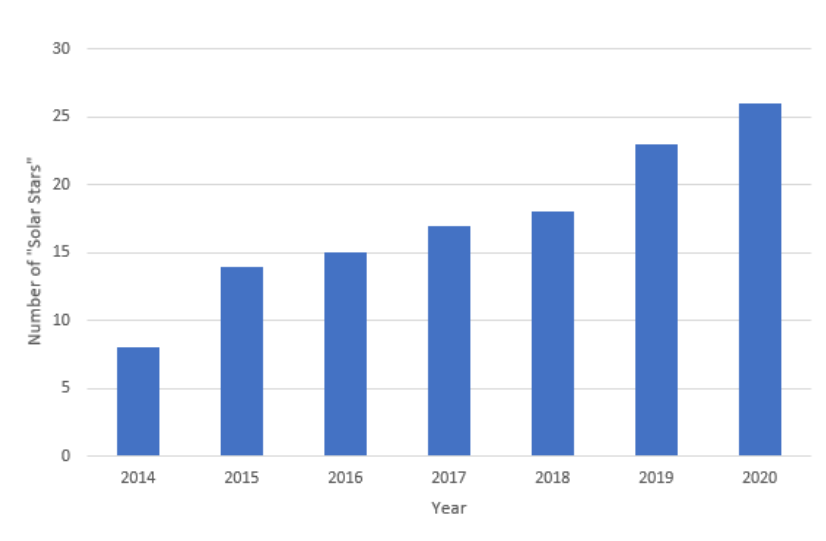
So, all in all, good signs that solar capacity is expanding significantly.
Here are the 10 U.S. cities with the greatest solar capacity per capita (measured as watts per person):
- Honolulu, HI
- Las Vegas, NV
- San Diego, CA
- Albuquerque, NM
- San Jose, CA
- San Antonio, TX (Annie + I’s home city!)
- Burlington, VT
- New Orleans, LA
- Phoenix, AZ
- Washington, DC
Many of these cities listed have adopted advantageous solar rebate programs, tax credits, and unique low or zero-interest financing programs.
Let’s hope the momentum continues!
Annie and I hope to add to the list of home solar installs soon after we return to San Antonio in 2023.
☀️ Solar Panels + The Neighbor Effect
Every solar installation in a neighborhood increases the probability of more residents following suit. This research stresses the indirect benefit our personal actions have towards influencing the adoption of environmentally friendly practices.
The actions we take as individuals do matter! Any small action we take to fight climate change influences our neighbors to follow suit.
🅿️ French Parking Lots to Be Covered with Solar Panels
In France, legislation was passed that would require all car parks able to fit 80 or more vehicles must be covered with solar panels. The French government believes that this increased solar generation would help to develop 11 gigawatts of power.
For us to move forward powering our cities and economies free of fossil fuels, we’ll need to consider all available, underutilized space.
🌲 Tree Shade Conserves Energy
Trees positioned properly can save up to 25% of the energy a household typically uses. Well-placed trees can insulate the home from windbreaks in winter and shade the home from direct sun during the summer. Planting trees helps us to save energy, reduce our own carbon emissions, and reduce our energy costs!
Annie and I are making landscaping/homesteading plans for when we return to our Texas home in early 2023 to build a more climate-resilient home and neighborhood.
🍃 Solar and Wind Power Saves Texas?
During a record Texas heat wave in June 2022, Texas’ power grid saw nearly 40% of it’s power supplied by wind and solar. This increase in renewable energy capacity reportedly allowed the Texas power grid to bear the heat surprisingly well and avoid any dangerous blackouts. For a highly “anti-renewable” state, this is promising!
Good Climate News: Ecosystem Restoration
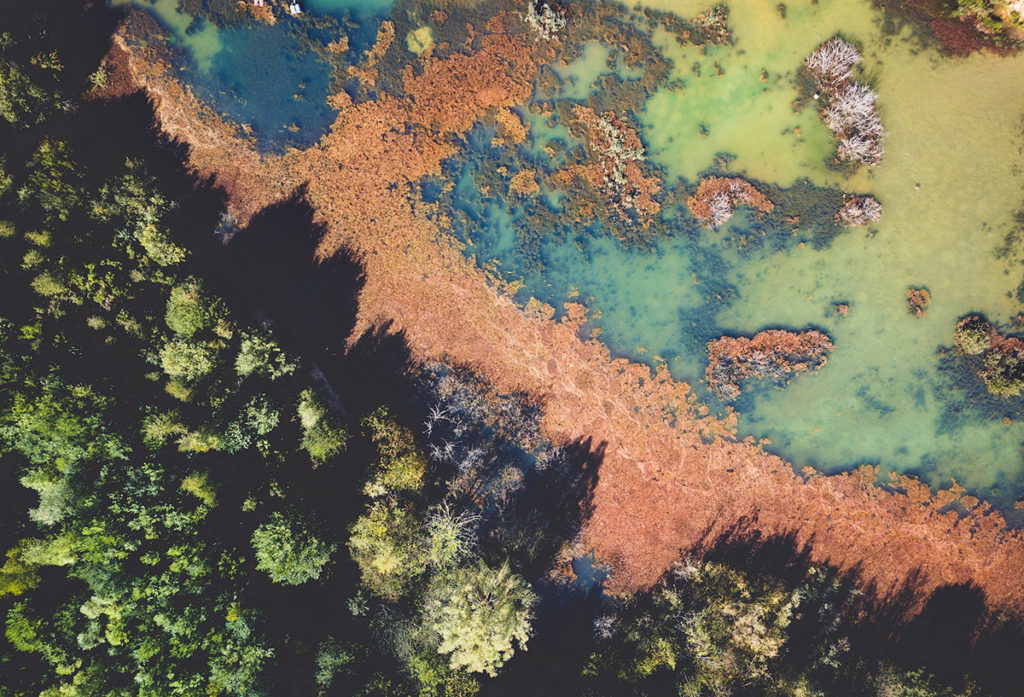
🌊 Houston Hits Flooding with Nature-Based Solutions
One of the biggest challenges facing the city of Houston as global warming continues: flooding. The city decided to employ a unique, multi-beneficial solution to slow down the water and reduce flooding during events like Hurricane Harvey.
The Clear Lake Water Authority and Exploration Green Conservancy secured land at an abandoned golf course to construct a set of retention ponds. In a storm event, each pond can hold up to 100 million gallons of water! The water will then slowly drain out into the surrounding bayous.
The group involved in the project also made a point to not make the land solely functional for storm events. As well, the ponds will offer water to support native plant and animal life, and feed thousands of native trees and hundreds of native plant species. The whole area also offers six miles of walking trails for local communities to enjoy!
The first retention pond was built before Hurricane Harvey in 2017 and was estimated to have saved 150 homes from flooding events. The project is estimated to be completed in 2023. A local solution like this helps us to go from climate crisis to envisioning what a climate utopia can look like. Natural disasters like Hurricane Harvey can be channeled to recharge our local ecosystems.
🏡 Homeowners Turn Yards into Prairies to Combat Drought
In Nebraska (and just about everywhere else in the world), the local climate is swinging from either the wettest year on record to the driest year on record. Because of climate change and the erosion of our local ecosystems, many of us are living in a flood-to-drought cycle.
To have both flood and drought-resilient landscapes, Nebraskans are converting their conventional grass lawns into prairies. This means they are removing or killing off their turf grass and replacing it with native grasses, wildflowers, and trees.
These prairie lawns turn out to offer a list of benefits. They capture more water during heavy rains because the native plant life enriches the soil. Prairie lawns also require far less maintenance! After they are established they only require an annual cutting back and some weeding in the first year or so.
And as well, they better support the local bird, bee, and butterfly life! More and more homeowners are turning from conventional lawns to meadows and prairies to do their part to address the climate crisis.
🐚 Coral Comes Back
Coral reefs can recover. Australia’s Great Barrier Reef is showing its higher coral reef cover in over 30 years!
While certainly still vulnerable to changing conditions in waters around the world, this is undoubtedly good news. Coral reefs are resilient, and if given the opportunity they can come back.
Coral reefs are incredibly important ecosystems, supporting a wide range of marine life. Securing their future will be imperative.
🇳🇬 In the Worst of Conditions, Ecosystem Restoration Works
A Nigerian Scientist, Eucharia Nwaichi, is on a mission to restore and regenerate her home country. The Niger Delta, where she focuses her work, has become one of the most polluted on the planet. They’ve recorded countless oil spills from international oil giants and as a product of that extreme pollution, the country’s natural resources (water, fishing, etc.) have been lost or at best toxified.
This loss of natural resources has perpetuated poverty throughout the country and made conflict/violence/ ever-present.
Despite all of this, Nwaichi has continued to have success standing up to fossil fuel companies, and find community support and involvement for her solution of bioremediation to detoxify the area by building native vegetation.
In some of the most difficult contexts in the world, Nwaichi is showing that regeneration can be done.
⛳️ From Golf Course to Conversation Area
A defunct golf course in California was purchased by a nonprofit organization and rewilded to restore a historic floodplain and wetlands area. In the few years since the project began, bobcats, black bears, and raptors have been spotted in the area!
This particular project has been a massive victory for local conservation efforts.
Good Climate News: Waste
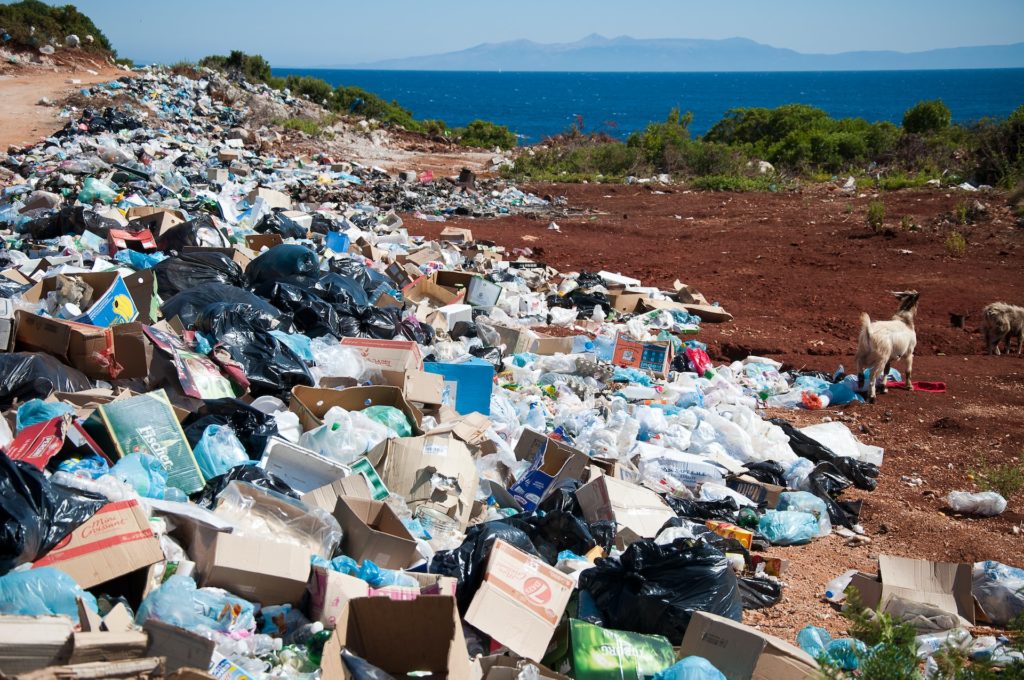
🍄 Mushrooms Can Eat Plastic
What can’t mushrooms do? It seems for any one job, there’s a fungus who can do it. They really are fantastic, aren’t they? Anyways…
Over a decade ago, Yale university students discovered Pestalotiopsis. This fungus can eat plastic waste and survive in oxygen-starved environments. Crazy, right?
Researchers imagine that in the future households will have some home system containing the fungus to recycle their plastic and municipalities will have the commercial-scale equivalent.
🗑 Landfills Can Go Green!
In Vienna, they’ve reengineered a 150-acre landfill to serve both as a waste processing facility and a wildlife habitat.
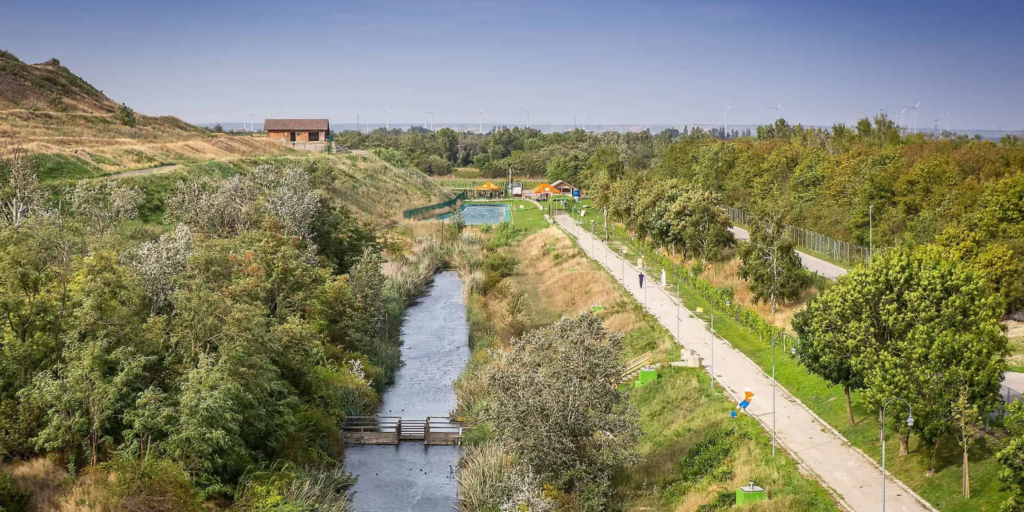
Rautenweg is Austria’s largest landfill. And through the combined efforts of habitat restoration and recycling and waste-to-energy processes, the entire site saves more energy than it uses. The Vienna region started to take a different approach to their waste management starting all the way back in the 1960s.
They’ve thought extensively about how they can reduce the negative impacts of a conventionally used and managed landfill. Vienna incinerates its trash and uses that heat to heat nearly one-fifth of the city’s homes.
A once critically endangered species of goat, the Pinzgau, were brought to the landfill area to act as eco-friendly lawnmowers. They’ve since repopulated and many of those goats born in the 150-acre area have been re-introduced to the wild.
This is an exceptional example of how to re-think all of the spaces that we use, even those we imagine might never positively affect the environment around it.
Good Climate News: Biodiversity

🔥 Beavers Beat Wildfires
Beaver dams create wetland ecosystems. By building their impenetrable dams, they cause water to pool. This creates deeper waters that are cooler on the bottom. Beavers also create small channels off their dams which further spreads the water across the land.
The more the water spreads across the land, the more it slows down and both have greater chance to evaporate into the air (cooling the air) and infiltrate the ground and recharge the aquifers.
Researchers have found that during the terrible wildfire seasons, wetlands created by beavers offer a refuge for other animals in the area as they are too wet to burn.
🇪🇸 10th Rewilding Europe Project Launches in Spain
Rewilding Europe has secured funding for three years and launched its 10th project on the continent. This time, east of Madrid in Spain.
The project has been introduced into an area of Spain that had been relatively abandoned. It’s one of the least populated areas in the entirety of Europe.
Part of this project is designed to benefit both nature and people, as for the few people that have continued living here, there will be designed incentives to protect the old-growth forest of the area and create nature-based tourism.
Among the animals being re-introduced; the Iberian Lynx, the Black Vulture, wild horses, and many more.
The Iberian Lynx was the world’s most endangered species of cat 20 years ago! Thanks to restoration and conservation projects like these, there are now over 1,000 Lynx across Portugal and Spain.
 Wild Mammals Make a Comeback in Europe
Wild Mammals Make a Comeback in Europe
Wild mammals in Europe are seeing significant increases in population, thanks to a combination of protections, hunting bans and quotas, conversation and reintroduction efforts, as well as the decrease in agricultural land use.

These trends offer hope. Although the road is long, we can work to restore our biodiversity.
The roadmap Europe offers while not easy, isn’t terribly complicated:
- Create protections, hunting bans or quotas
- Create rewards schemes for landowners for the reproduction of target species
- Support conservationists & reintroduction programs
- Return land to nature (rewild previous wildlife habitats)
The key component here once protections are in place: Europe has used less agricultural land over the last 50 years, returned that land to nature, and over that same time produced greater food.
Where can we do more with less because of outdated, costly, or inefficient practices?
This is also a story about constraints. I’m sure over the last 50-100 years, there have been plenty of detractors suggesting that it’s not possible to return any agricultural land to nature because the European population needs that land for food supply.
However, it seems that it was decided this problem-solving (how do we support our mammal populations while as well producing enough food for our inhabitants) was worth it.
The scales all of a sudden tipped and the value put on biodiversity changed.
Remarkably, the European Bison population has surpassed 10,000 across Europe after going extinct in the wild nearly 100 years ago. It’s a long road, and a harder road the further we degrade, but it is possible.
❤️ Restoring the Earth is Restorative for YOU
A researcher in Western Australia was interested in exploring the question, “what does working in ecosystem restoration do for your mental and emotional health?” Her local conservation group partnered with a community high school where students were randomly selected to precipitated in a 20-week ecological restoration program.
The students were supervised and offered guidance from varied experts throughout the program. To measure the effects on the students themselves, they were surveyed three times throughout the program.
The researchers on the project found that as a result of the work, the students experienced decreased social anxiety and an increase in their sense of hope and optimism for how they might affect their local natural environment.
🐠 Marine Protected Areas Work
In 2016, then-President Barack Obama expanded the Papahanaumokuakea Marine National Monument making it for a while the largest marine protected area in the world. This 200-mile stretch around the Northwestern Hawaiian Islands became a no-fish zone so that local fish populations could recover.
In the years since, the populations have recovered and research being done is beginning to show for the first time a benefit to commercial fishers who fish right outside the protected area. This is being called a “spillover effect.” Success within the marine protected area is providing a better catch for commercial fishing outside the protected area.
It’s not certain whether this benefit is a “net benefit” from the territory that commercial fishing lost with the marine protected area, but more research is being done.
You would have to think overfishing would lead to no fishing, so to me, it appears this is unquestionably a positive sign for the commercial fishing industry.
Turns out, Marine Protected Areas help marine life thrive. Who would’ve thought?
Good Climate News: Infrastructure
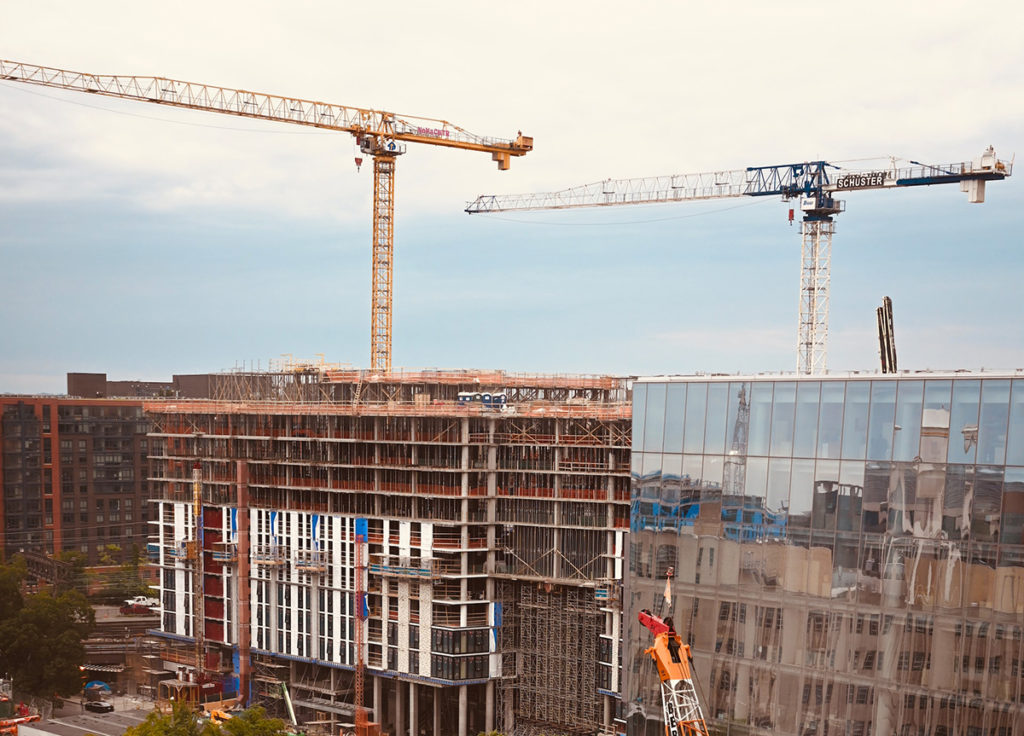
🏫 Buildings of the Future Capture Carbon Dioxide
Near Brussels, a school was renovated using a new, sustainable building material: hemp. Hemp provides a major opportunity for lower-emission construction. Hemp is relatively easily grown, it’s fast-growing, and it takes ⅓ the amount of carbon to produce than concrete.
Not to mention, as it grows Hemp in fact is capturing carbon dioxide at a rate greater than the average forest. The hemp is used in conjunction with water, lime, and/or clay to make hempcrete. Together, this hempcrete is fire-resistant, soundproof, and highly insulative.
Working with hemp also avoids the use and transportation of many harmful chemicals used in conventional building materials. Future generations might enjoy not just more sustainable buildings, but healthy buildings as well.
Good Climate News: Government Action
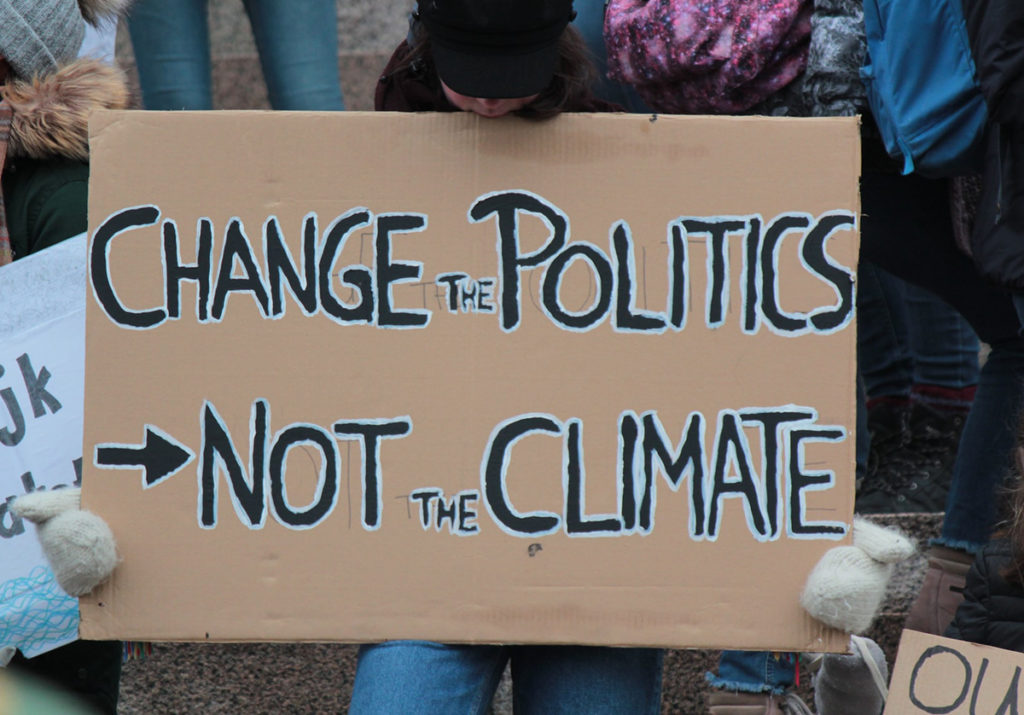
🇧🇷 Lula’s Election Win Could Save the Amazon
The most recent Brazilian Presidential election was critical for the health of the Amazon (and therefore for the health of all of us!). Luiz Inácio Lula da Silva (known as Lula) defeated Jair Bolsanaro in a runoff election in an extremely close election.
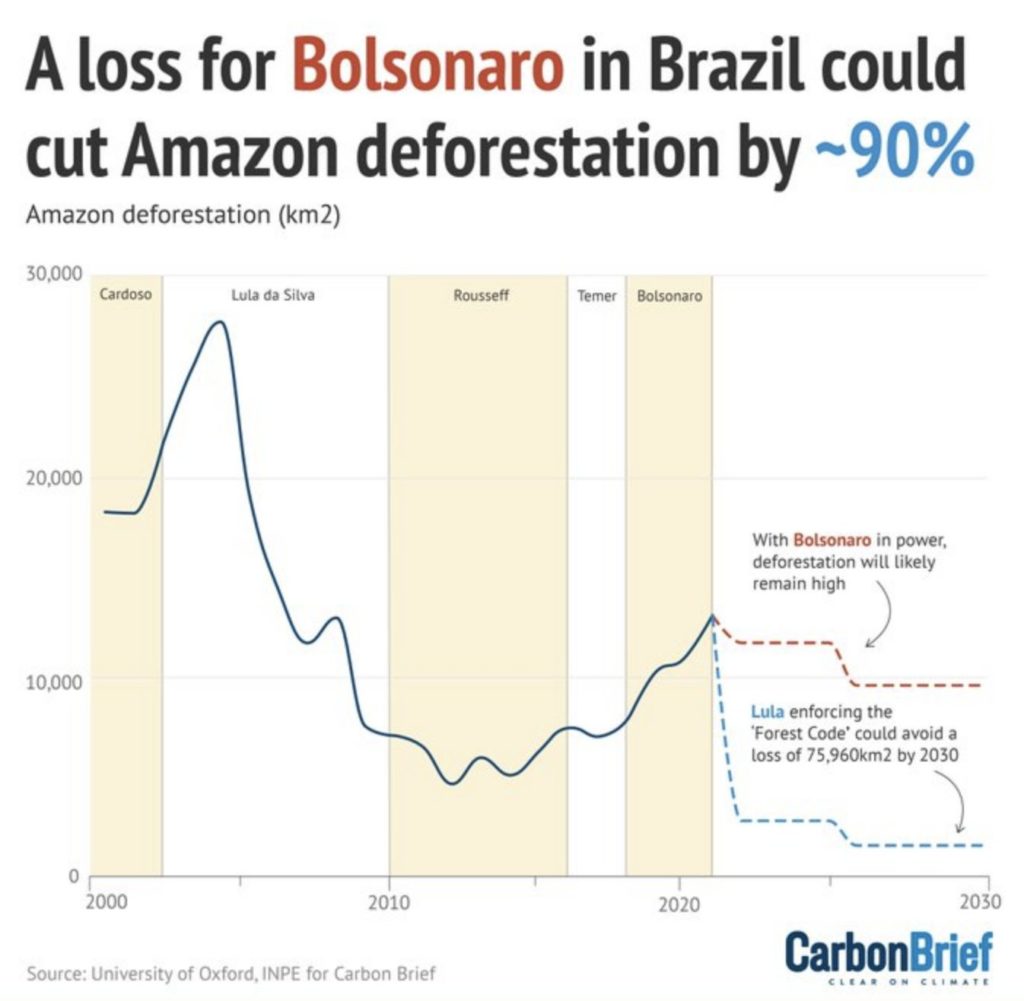
Lula, who is returning to the presidency has pledged to eliminate as much illegal deforestation as possible and likewise promote reforestation wherever possible. Bolsanaro has allowed deforestation to run rampant.
With the assumption that Lula’s pledge will hold and if he was elected that Bolsanaro would continue to allow such exploitation of the Amazon, Carbon Brief believes that deforestation of the Amazon could fall by 89% over the next decade.
Certainly, none of this is a 100% certainty, but this election cycle was undoubtedly good news for the Amazon and our hopes to curb rising temperatures over the next years.
🇬🇧 UK Secures Record Supply of Renewable Energy Capacity
The UK Government has been hosting auctions to contract renewable energy projects to generate a certain amount of electricity over the coming years. This, to support the UK’s goal of using 95% low-carbon energy sources by 2030 and becoming completely carbon neutral by 2035.
Renewable energy projects will bid on providing a certain amount of energy for a fixed price. After the UK’s 2022 auction, they secured 11 gigawatts of energy for a price that’s 9 times less than the current gas prices!
🇺🇸 The U.S. Inflation Reduction Act Unlocks a Climate Economy
Credit Suisse, published a research report on the potential impacts of the Inflation Reduction Act on national and global economies. The Swedish investment bank concluded that the IRA’s impact is being way underestimated.
First, they suggest the injection of spending will be huge. The tax credits for Electric Vehicles (EVs) and zero-carbon electricity are “uncapped.” And so, Credit Suisse believes that the initial $374 billion spending figure will look closer to $800 billion from all the potential businesses and individuals seeking to take advantage. All this federal spending encourages greater private investment, which puts this report’s estimates on total spending at $1.7 trillion over the next 10 years.
Second, the IRA provides the roadmap for the U.S. to become the leading global provider of cheap, renewable energy the report suggests. The U.S. is already the leading producer of oil and natural gas, and leading in clean energy seems likewise quite possible.
The report outlines the risks of repeal by a Republican-led government farfetched as analysis shows that the IRA would benefit republication districts the most.
The most legitimate risk they outlined was whether or not the U.S. would be able to keep up with the execution. Can we build the clean energy infrastructure (get permits, train the workforce, build, etc.) fast enough?
All this says to me, if you’re interested in working in climate, thinking about climate, writing about climate, the wind might be in your sails.
Hang in or get in there! Changing our lifestyles and economies to be more restorative and regenerative by their nature is not just morally imperative, it’s impending. On it’s face the IRA wasn’t / isn’t perfect, but again this created critical momentum in the right direction.
Some benefits are clear, others are sometimes unknown. As this research suggests, the passing of the IRA might offer benefits we can’t imagine (yet).
😎Climate is Cooler Than You Think
Turns out, Americans grossly underestimate how popular the support for climate policy is. No matter the demographic (conservative, liberal, young, old, etc.) everyone believes that support for climate action is less popular than it actually is.
Researchers associated with the University of Princeton found a gap between what percentage of Americans support climate policy and what percentage of Americans we believe support climate policy.
They found that 66% to 80% of Americans support climate policy, but on average we believe that only 37% to 43% support climate policy.
Two sides to this.
Bad news: we think climate policy is mostly unpopular and we feel discouraged or hopeless that anything can be/will be done because most people don’t want it.
Good news: if we understand and share the implications of this information, what might that do for our feeling of hopefulness and optimism? What we believe affects what we do. If we believed that action to address climate change was incredibly popular, might that change how we all act?

Thanks for reading! You can take your sustainability journey further with our weekly newsletter. Each week, I share 1 meditation on the art of living & working sustainably. 7500+ people subscribe. Enter your email below to join in.

Cory Ames
Co-Founder & CEO, Grow Ensemble
I’m Cory Ames. I’m a writer, podcaster, social entrepreneur, and the Founder of Grow Ensemble.



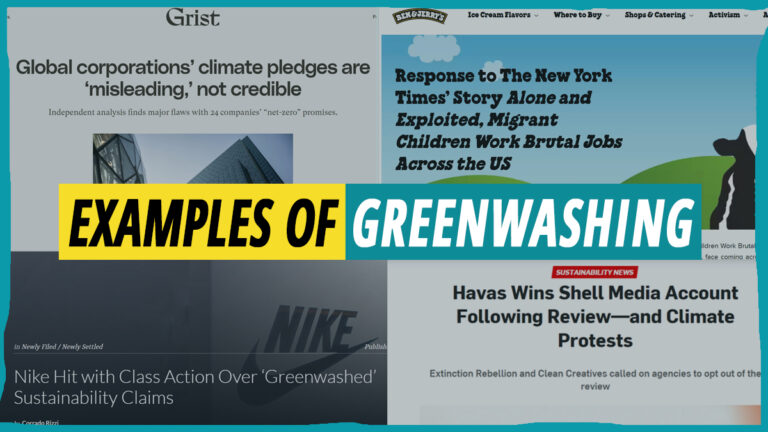
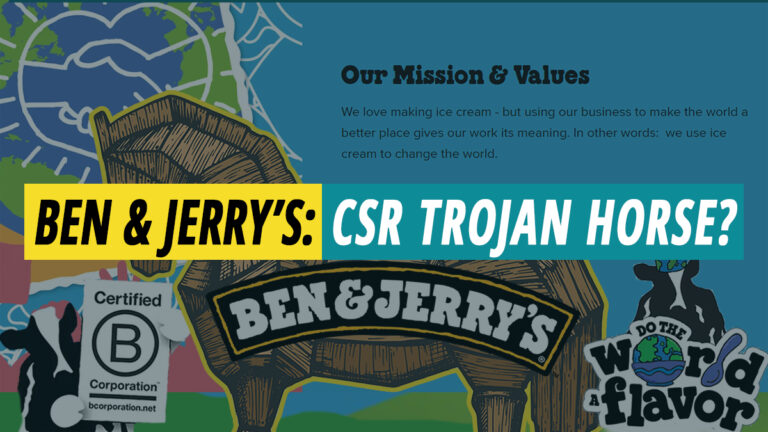

Leave a Reply